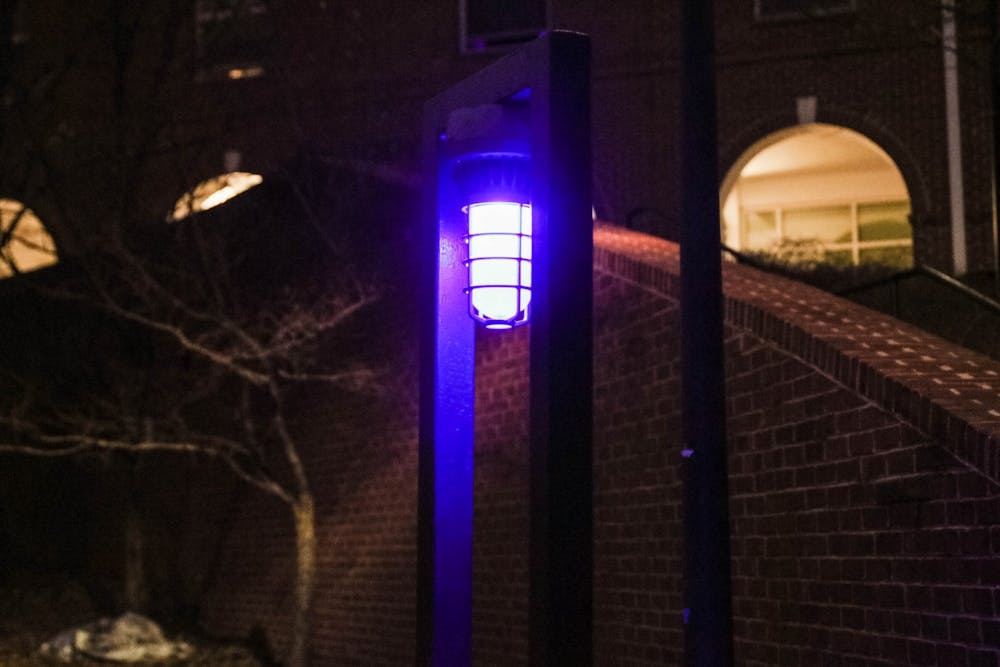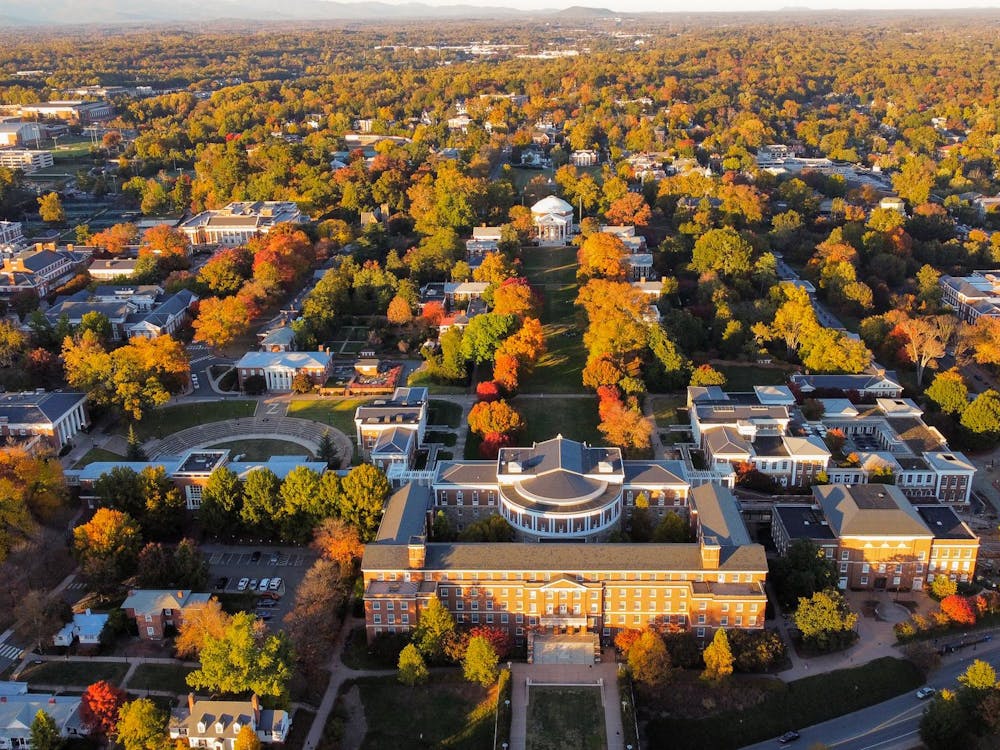No matter what your walk to class takes you by, it is near impossible to avoid passing one of the University’s blue light phones. The University has taken great care in securing Grounds, with nearly 100 blue lights readily available to students on-Grounds. However, that same care has not been taken with areas outside of central Grounds, particularly around centers of off-Grounds student housing. With well over half of all University students living off-Grounds, it is past time for the University to expand the blue light phone system.
In order to better understand why the University should continue to invest in the blue light system, it is important to know how the phones work. With their distinctive blue-lighted tops, the wireless system requires merely the push of a button to alert the University Police Department. Blue lights, however, are more than just phones. When you call using one blue light phone, you can travel to a second phone and continue your call, allowing police to stay in contact with you as the situation progresses. In this way, the blue light phones are more of an organized system than they are a mere police payphone. The power of the blue light phones is not that there is one of them — it is that there are many. One blue light phone is no good as you have to be in a very specific area to access it. Adding to this system only strengthens the rest of the system, allowing students to access the phones more regularly and with ease.
I know that hearing “payphone” immediately makes one think that blue lights are outdated, or at the very least, outmatched by cellphones. And while I will admit I was hesitant to refer to the phones using this term, the blue light’s payphone-esque features are what make it so reliable. Blue lights do not die, they do not break, and they do not go offline. They are always readily available and do not even require you to speak to a 911 operator — just pushing the button sends police to your location. Recent apps like Rave Guardian intend to capture some of the simplicity of blue light phones, allowing you to contact police with just the push of a button. But Rave and apps like it require an internet connection and a charged phone — sometimes a rare commodity after a long night out. An increase in the amount of blue lights would act as a safety net, allowing you to always have access to help when you need it regardless of whether your phone is dead or has wifi.
There are currently seven blue light phones — owned and operated by the City of Charlottesville — near off-Grounds housing behind the Corner. There are zero blue lights off of housing down Jefferson Park Avenue by Fry's Spring. Simply put, there are not enough blue lights to ensure each student has equal access to this important safety mechanism. While seven is better than zero, this is a misutilization of what I would argue is the phone’s main function — a safety network. If you are using a blue light phone, it is possible that you are not in a position to call from one location. Extending the blue light path allows students to have their calls continue to be monitored as they get home. While on-Grounds blue lights are often side by side, there is a block separating each of the few blue lights that currently exist off-Grounds. Additionally, the last blue light north of the Lawn is on the corner of Gordon and 15th Street, by the Martha Jefferson House. If you live off the Corner, your best case scenario is one blue light on your street. If you are past Gordon or off of JPA, you are on your own. This is unacceptable. Especially in light of recent events, the University must work with the City to redress this unnecessary gap in safety measures.
Some may point out that the blue light phones at the University are underutilized. While the data shows that blue lights are not used often, and I myself have never seen anyone use one of the blue lights, this is more a reflection of their location than it is their efficacy. How often do you need to call the police outside of New Cabel hall or O-Hill? Now, how often do you think people need to call the police on Grady or 14th? For years now, local police have been aware of the rising crime rate at the University. Although the most recent full data on crime is from 2021, just a quick search for “Longo” in my email was enough to turn up over 50 community alerts in the last year, most of those occurring in off-Grounds areas that lack a robust blue light system. And while it is true that blue lights alone are not going to rid Charlottesville of crime, a more complete system has the capability to deter crime. In almost every case in which blue lights were installed at a school, crimes went down from their presence alone.
Extending the blue light system to off-Grounds housing raises a potential concern from some that they may be used by non-University students. And to that, I say, “who cares”. We owe it to Charlottesville to be the best neighbor we can be. Inadvertently providing Charlottesville residents with additional safety measures is by no means a downside.
The truth is I am tired. I am tired of getting emails every weekend about violent crimes happening on the same poorly lit sections of Grounds. I am tired of having to jog home from work at 2 a.m. every night. The University is sitting on an endowment of over five billion dollars. Each phone costs 7,500 dollars — a small price to pay for student safety. Partnering with the City of Charlottesville to install additional blue light phones in off Grounds areas is an easy step the University can take toward securing the safety of its students.
Dan Freed is an Opinion Columnist who writes about Academics for The Cavalier Daily. He can be reached at opinion@cavalierdaily.com.
The opinions expressed in this column are not necessarily those of The Cavalier Daily. Columns represent the views of the authors alone.
CORRECTION: A previous version of this article left unspecified that the blue light phones currently located in off-Grounds areas are owned and operated by the City of Charlottesville. The article has been clarified to reflect this context.







